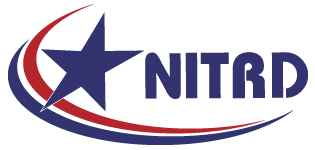Influential Women in STEM: Insight
STEM encompasses the fields of science, technology, engineering, and mathematics. Entering a STEM field can seem daunting, which many who are working in STEM know. Valerie Thomas, inventor and NASA scientist, experienced a lack of encouragement to be in science and mathematics while in high school. As a bit of inspiration to readers, Valerie persisted in STEM, became a physics major in college, and developed real-time computer data systems that supported satellite operations. Valerie oversaw the NASA Landsat program gathering satellite imagery of Earth—and did so much more during 30+ years at NASA!
“All sorts of things can happen when you’re open to new ideas and playing around with things.”
-Stephanie Kwolek, chemist who invented Kevlar and winner of the Lavoisier Medal for technical achievements
There are so many different STEM fields that choosing a direction can seem daunting. To help with this dilemma, we chatted with five women leaders in STEM fields who have “been there” to ask what advice they wish they had had when beginning their paths. Their insights will hopefully provide encouragement to those just beginning to consider STEM careers. Look at this time in your life as an opportunity to explore your interests and the possibilities of choices!
The first piece of advice: When you find your passion…run with it!
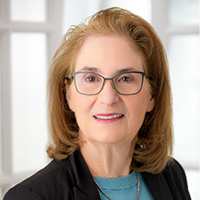
Marlene Kaplan, the Deputy Director of STEM Education for the White House Office of Science and Technology (OSTP), has extensive experience in STEM education policy and management. This gives her insight into the challenges many women face working in STEM fields, as she explains here about what information would have been beneficial to her when first entering a STEM field:
I wish I had known that there are so many opportunities in STEM-related fields of policy, communications, education, management, and analysis. These opportunities cross sectors that include industry, government, and nonprofits, as well as academia. I picked biochemistry as an undergraduate but eventually switched to a more applied environmental science doctoral program. I later found my way into environmental policy and then STEM education policy. Learning about different fields and finding champions and mentors to help you navigate are important components of career development.
If you don’t see a path, make your own!
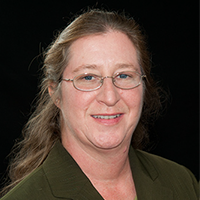
Patricia Wolfhope, the Senior Subject Matter Expert in the Science & Technology Directorate at the Department of Homeland Security, elaborated on Marlene’s advice. Patricia emphasized that,
Understanding the bigger picture of science and engineering would have been most helpful. Obtaining a degree in a science field opens the door to many different areas and not just the specific degree obtained.
Find a role model and then BE a role model
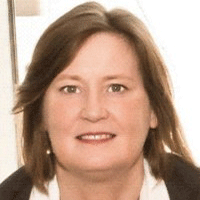
Wendy Nilsen, the lead Program Director in the Smart and Connected Health program in the Computer and Information Science and Engineering Directorate at the National Science Foundation (NSF), stressed the importance of mentors in STEM. She addressed one issue many women have faced when they began their studies in STEM field,
I wished I had models of women in STEM when I was growing up. My teachers kept mentioning STEM fields, but everyone they talked about [was] not like me, and I found it hard to envision myself in that world.
“The most difficult thing is the decision to act; the rest is merely tenacity.”
– Amelia Earhart
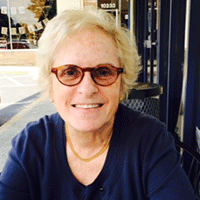
Sally Howe, the Associate Director for NCO/NITRD from 2001 to 2007, made the point that new opportunities open up and you should be ready to seize the moment. She explained,
When I was 15 years old the world was about to open up with the vast variety of STEM careers that would be available to women and not just to men. The 1957 Sputnik launch led to DARPA’s [Defense Advanced Research Projects Agency] creation and the National Defense Education Act that funded high school science classes, including new hands-on physics courses that I took. Around that time, I decided to be a math major so I could see its frontier. Being a math major put me in a position to take advantage of new and newly available opportunities..
Sally expanded on her answer with the valuable insight, Work hard in hard fields so you’re prepared to take advantage of unknowable opportunities if and when they arise, and then step up to the plate.
“The future belongs to those who believe in the beauty of their dreams.”
– Eleanor Roosevelt
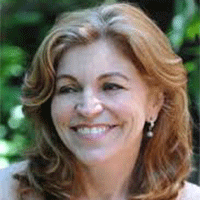
Sonia Sachs, a computer scientist and Advanced Scientific Computing Research Program Manager in the Office of Science at the U.S. Department of Energy, came to the United States from Brazil, where STEM programs were not available during her early education. She described her experience this way,
I had to figure out everything by myself (and without the Internet!). I think I was born an engineer and a scientist, so I never felt that I needed much guidance or information to pursue my career goals.
Sonia sums up what every woman who has been in STEM understands, that when you are starting out your education in STEM fields you must pursue your interests and not let anyone discourage your dreams. Own your own story!
From STEM Student to STEM Career
Once your education is complete, the next step is beginning your career. As you move to your next step in life, remember these words:
“If you know you are on the right track, if you have this inner knowledge, then nobody can turn you off… no matter what they say.“
-Barbara McClintock, Cytogeneticist and winner of the 1983 Nobel Prize in Physiology.
Marlene conveyed an insight that we often do not focus on when we first embark on our career path, and that is to try different positions and topics. She explained what she meant by highlighting her personal experience,
Careers can take many turns. At every step, you learn more about what areas excite you and what skills you are good at. I came to Washington, DC, on a fellowship when I was 27 and discovered how much I enjoyed policy. A few years later I worked in the U.S. Senate. For the past 15 years, I’ve been involved in science education, running Federal scholarship and grant programs, and working on education policy, particularly related to higher education and workforce development. I am grateful that I had the opportunity to move around and try different positions and topics. I would encourage early career scientists to look for opportunities and expand their experiences.
Our other guests echoed these sentiments. Sonia gave the advice she was given by one of her professors,
You can do much more, so go figure out how you will reach for the stars, even if that means leaving your city, your country, your university, or your current work.
Sally emphasized the need to apply your STEM education in all aspects of your career. She pointed out that,
Homework proving theorems seemingly day in and day out helped train my brain to be almost ruthlessly logical, a useful trait when I was writing and editing [High-Performance Computing and Communications Program]/NITRD Supplements to the President’s Budget.”
Her experience underscores the importance of appreciating the skills you have learned because they may come in handy in ways that may not be immediately obvious.
Wendy brought all this excellent advice into perspective when she pointed out what we need to remember,
Whenever STEM projects were discussed, the options to change the world for good were rarely mentioned. I look back on this as a missed opportunity to broaden the vision of STEM and, in doing so, broaden the diversity of the STEM workforce pipeline.
No matter which STEM field you select, use your skills and opportunities for good, improve the world, and lift others up with you. Use all your resources—and you probably have more than you imagine. Look at those around you—your teachers, your relatives, and your friends’ family —who entered STEM fields. Ask them how they found their passion and direction to begin their STEM journey. Ask what advice they have for you, as they too have “been there”. And remember . . .
“…fortitude is key. More than anything, be consistent. Go at it. Go at it. Go at it. When you succeed, don’t forget the responsibility of making someone else succeed with you.”
-Antonia Novello, Former Surgeon General, United States.
***
A special thanks from NITRD to the women who provided these insights about entering STEM fields:
Marlene Kaplan is the Deputy Director of STEM Education for the White House Office of Science and Technology (OSTP) and is part of the OSTP Committee on STEM Education (CoSTEM). To prepare the future workforce, Marlene worked with Federal agencies to implement the CoSTEM report, Charting a Course for Success: America’s Strategy for STEM Education, released by the National Science and Technology Council (NSTC). Prior to being at OSTP, Marlene was the NOAA Deputy Director.
Wendy Nilsen is the lead Program Director in the Smart and Connected Health program in the Computer and Information Science and Engineering Directorate at NSF. Her work focuses on the intersection of computing, engineering, and health, specifically data collection, advanced analytics, and the creation of effective cyber-human systems. As part of her work, Wendy convenes workshops to address methods used in technology aspects of health research.
Sally Howe served as the Associate Director for NCO/NITRD from 2001 to 2007. She was also part of the High-Performance Computing and Communications Program (HPCC) that preceded NITRD. Sally’s government career also included working at the National Institute of Standards and Technology and the National Institute of Health National Library of Medicine. Her PhD is in applied mathematics from Brown University.
Patricia Wolfhope is the Senior Subject Matter Expert in the Science & Technology Directorate at the Department of Homeland Security. She manages and transitions digital forensic systems and is responsible for developing, testing, integrating, and delivering technical solutions to Federal, State, and local law enforcement agencies.
Sonia Sachs is a computer scientist and Advanced Scientific Computing Research Program Manager in the Office of Science at the U.S. Department of Energy (DOE). She also manages the Argonne Leadership Computing Facility (ALCF). Before her time at DOE, Sonia was a principal investigator at the University of California, Berkeley, where she managed research projects sponsored by DOE, NSF, and DARPA. Her PhD is in Electrical Engineering and Computer Science from UC Berkeley.
****
Women’s History Month Resources/References
- Celebrating Women in NITRD, 2020.
- Influential Women In STEM, 2020.
- Influential Women in STEM: Insight, 2020.
- Prominent Women Serving America, 2020.
- National Women’s History Month: Women of the NITRD National Coordination Office, 2020.
- National Women’s History Month: NITRD Looks Back at Outstanding Leaders, 2019.
- National Women’s History Month: Women of the NITRD Interagency Working Groups, 2019.
- National Women’s History Month: Women of the NITRD Subcommittee, 2019.
Page updated: March 9, 2020

